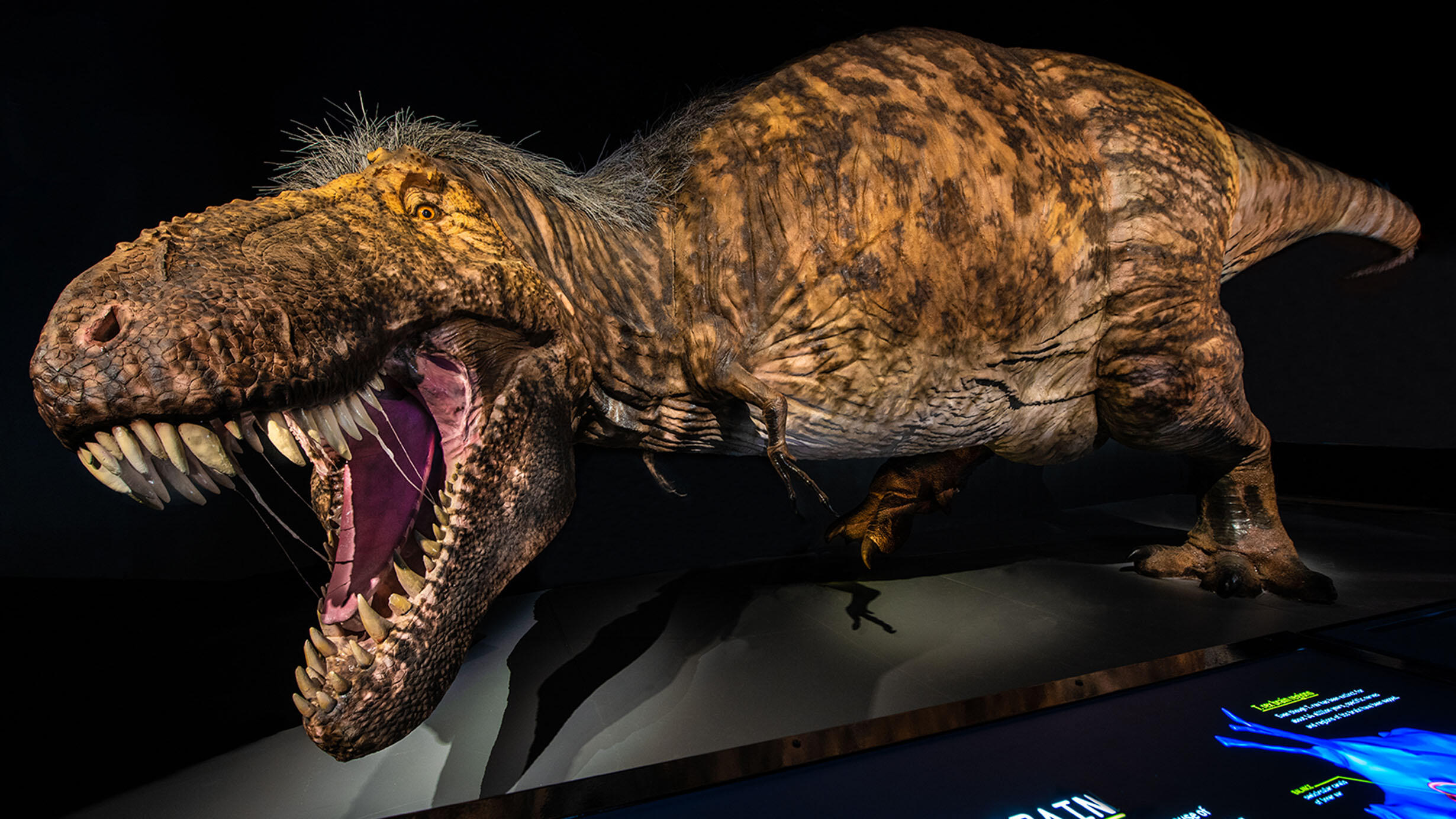 Tyrannosaurus rex grew into a giant by gaining more than 4 pounds per day until it reached adulthood.
Tyrannosaurus rex grew into a giant by gaining more than 4 pounds per day until it reached adulthood.D. Finnin/© AMNH
As a hatchling, Tyrannosaurus rex started out a fraction of the size of an adult dinosaur—which could weigh upward of 15,000 pounds, or about the same as five compact cars.
But what the small theropods lacked in size, they made up for in speed.
“Tyrannosaurus rex, during its growth cycle, grew at almost 2.5 kilograms [4.6 pounds] per day for about 14 years,” says Mark Norell, Macaulay Curator in the Division of Paleontology and curator of the new exhibition T. rex: The Ultimate Predator. That’s an astonishing 1,680 pounds per year.
This ferociously rapid growth rate was one of the things that set T. rex apart from its Mesozoic peers. It matured at an exceptionally quick clip for a dinosaur, leaping way ahead in size of other tyrannosaur species like Albertosaurus and Gorgosaurus around age 12.
That gave this predator a distinct advantage: by growing out of its young and vulnerable phase quickly, T. rex could spend about 30 percent of its lifetime as one of the largest predators ever to walk the Earth. Compare that to modern crocodilians—dinosaurs’ close cousins—which grow very slowly and, while reaching relatively massive sizes, attain only a fraction of the size and weight of an adult T. rex.
Find out how scientists used growth rings in dinosaur embryo teeth to estimate development rates.
Paleontologists have derived T. rex’s stunning growth rate by examining a cross-section of fossilized bones for growth lines—markings that are similar to tree rings, and present in nearly all vertebrates. For dinosaurs like T. rex, researchers often sample the thigh bone (femur).
R. Mickens/© AMNH
Gregory Erickson, a biologist at Florida State University who consulted on the special exhibition T. rex: The Ultimate Predator, has also found success sampling the pelvis, calf bone (fibula), ribs, gastralia, and skull bones. And as with trees, bone growth rings offer a glimpse into an organism’s life history: in T. rex, wide gaps between lines record growth spurts at early ages, and lines that form closer together show a slowdown in growth as the animal approached adulthood.
“If you can figure out the growth curve of an animal, you can figure out how fast it grew, how it matured, how it became either a giant or a dwarf,” says Erickson. “You can infer metabolic rates—and even at what size and age they typically died from the diversity of recovered skeletons.”
Learn more about how T. rex grew in T. rex: The Ultimate Predator, which opens March 11.
A version of this story first appeared in the Winter issue of the Member Magazine, Rotunda.